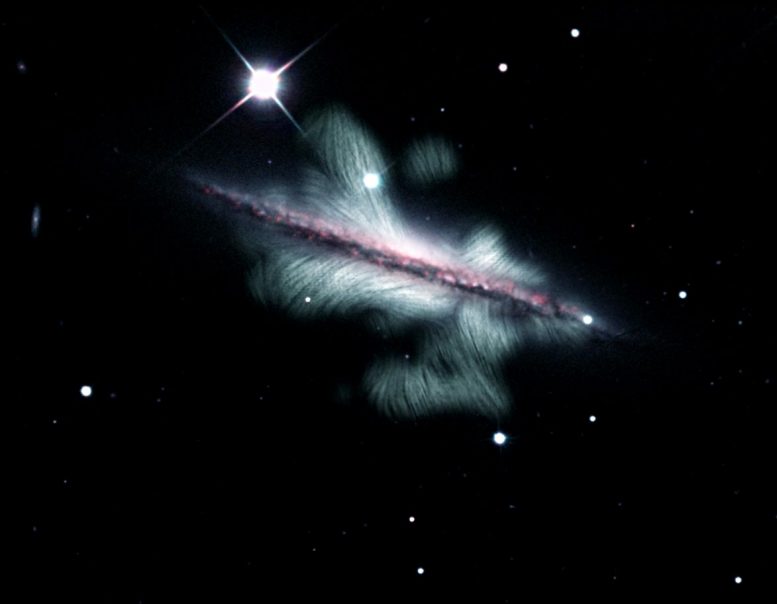
The spiral galaxy NGC 4217 has a huge magnetic field that is shown here as green lines. The data for this visualization were recorded with the radio telescope Karl G. Jansky Very Large Array (VLA) of the National Science Foundation. The image of the galaxy shown from the side is taken from data from the Sloan Digital Sky Survey and Kitt Peak National Observatory.
New Cosmic Magnetic Field Structures Discovered in Galaxy NGC 4217
Superbubbles, giant loops and X-shaped magnetic field structures – this galaxy boasts a veritable wealth of shapes. How such structures are formed is a mystery. A new study provides some clues.
Spiral galaxies such as our Milky Way can have sprawling magnetic fields. There are various theories about their formation, but so far the process is not well understood. An international research team has now analyzed the magnetic field of the Milky Way-like galaxy NGC 4217 in detail on the basis of radio astronomical observations and has discovered as yet unknown magnetic field structures. The data suggest that star formation and star explosions, so-called supernovae, are responsible for the visible structures.
The team led by Dr. Yelena Stein from Ruhr-Universität Bochum, the Centre de Données astronomiques de Strasbourg, and the Max Planck Institute for Radio Astronomy in Bonn together with US-American and Canadian colleagues, published their report in the journal Astronomy and Astrophysics, released online on 21 July 2020.
The analyzed data had been compiled in the project “Continuum Halos in Nearby Galaxies”, where radio waves were utilized to measure 35 galaxies. “Galaxy NGC 4217 is of particular interest to us,” explains Yelena Stein, who began the study at the Chair of Astronomy at Ruhr-Universität Bochum under Professor Ralf-Jürgen Dettmar and who currently works at the Centre de Données astronomiques de Strasbourg. NGC 4217 is similar to the Milky Way and is only about 67 million light-years away, which means relatively close to it, in the Ursa Major constellation. The researchers therefore hope to successfully transfer some of their findings to our home galaxy.
Magnetic fields and origins of star formation
When evaluating the data from NGC 4217, the researchers found several remarkable structures. The galaxy has an X-shaped magnetic field structure, which has also been observed in other galaxies, extending far outwards from the galaxy disk, namely over 20,000 light-years.
In addition to the X-shape, the team found a helix structure and two large bubble structures, also called superbubbles. The latter originate from places where many massive stars explode as supernovae, but also where stars are formed that emit stellar winds in the process. Researchers therefore suspect a connection between these phenomena.
“It is fascinating that we discover unexpected phenomena in every galaxy whenever we use radio polarization measurements,” points out Dr. Rainer Beck from the MPI for Radio Astronomy in Bonn, one of the authors of the study. “Here in NGC 4217, it is huge magnetic gas bubbles and a helix magnetic field that spirals upwards into the galaxy’s halo.”
The analysis moreover revealed large loop structures in the magnetic fields along the entire galaxy. “This has never been observed before,” explains Yelena Stein. “We suspect that the structures are caused by star formation because at these points matter is ejected outward.”
Image shows magnetic field structures
For their analysis, the researchers combined different methods that enabled them to visualize the ordered and chaotic magnetic fields of the galaxy both along the line of sight and perpendicular to it. The result was a comprehensive image of the structures.
To optimize the results, Yelena Stein combined the data evaluated by means of radio astronomy with an image of NGC 4217 that was taken in the visible light range. “Visualising the data was important to me,” stresses Stein. “Because when you think about galaxies, magnetic fields is not the first thing that comes to mind, although they can be gigantic and display unique structures. The image is supposed to shift the magnetic fields more into focus.”
Reference: “CHANG-ES XXI. Transport processes and the X-shaped magnetic field of NGC 4217: off-center superbubble structure” by Y. Stein, R.-J. Dettmar, R. Beck, J. Irwin, T. Wiegert, A. Miskolczi, Q. D. Wang, J. English, R. Henriksen, M. Radica and J.-T. Li, 21 July 2020, Astronomy & Astrophysics.
DOI: 10.1051/0004-6361/202037675
Image Credit: Composite image by Yelena Stein of the Centre de Données astronomiques de Strasbourg (CDS) with the support of Jayanne English (University of Manitoba). VLA radio data from Yelena Stein and Ralf-Jürgen Dettmar (Ruhr University Bochum). The observations are part of the project Continuum Halos in Nearby Galaxies – an EVLA Survey (CHANG-ES) led by Judith Irwin (Queen’s University, Canada). The optical data are from the Sloan Digital Sky Survey (www.sdss.org). The ionized hydrogen data (red) are from the 0.9m telescope of the Kitt Peak National Observatory, collected by Richard J. Rand of the University of New Mexico. The software code for tracing the magnetic field lines was adapted from the Linear Integral Convolution code provided by Arpad Miskolczi of Ruhr University.
Funding: The research was funded by the Hans Böckler Foundation and the German Research Foundation (DFG Research Unit 1254). Data were received from the Sloan Digital Sky Survey III – financed by the Alfred P. Sloan Foundation and participating institutions, the National Science Foundation and the U.S. Department of Energy Office of Science – and from the Wide-field Infrared Survey Explorer – financed by the National Aeronautics and Space Administration. The National Radio Astronomy Observatory (NRAO) is a facility of the NSF, operated under a cooperative agreement by Associated Universities, Inc.

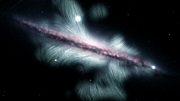
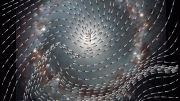
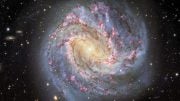
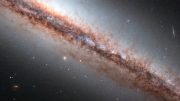
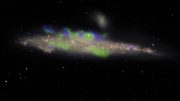
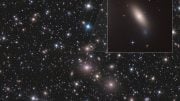
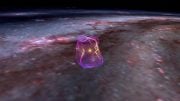
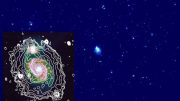
The statement “It is fascinating that we discover unexpected phenomena in every galaxy whenever we use radio polarization measurements” is inconsistent with the plasma physics analysis from the 1950’s. Ignoring Birkeland, Arp, Thornhill, Perrat and Scott among others. The General Theory only explains the effects of observing reality through observation by electromagnetic means, not the underlying reality. Ignoring a force thats 10^38 times stronger than gravity requires a cult like mentality, not scientific analysis.
There isn’t anything published on a “General Theory” of galaxy magnetic field that is sourced in Earth atmosphere Birkeland currents (say), there is no science there.
Since it isn’t science there is likely nothing peer review published that either “ignore” previous work nor find any use in it.
If that obvious lack isn’t enough to convince you this isn’t an area of science and therefore not useful, you have to find the empirical description elsewhere. And there is some irony here, after reading your comment:
“Electric Universe (EU) is an umbrella term that covers various pseudo-scientific cosmological ideas built around the claim that the formation and existence of various features of the Universe can be better explained by electricity and magnetism than by gravity alone. As a rule, EU is usually touted as an aether-based theory with numerous references to tall tales from mythology.[2][3] However, the exact details and claims are ambiguous, lack mathematical formalism, and often vary from one delusional crank to the next.” [ https://rationalwiki.org/wiki/Electric_Universe ]
From Wikipedia: “RationalWiki is a wiki whose stated goals are to analyze and refute pseudoscience and the anti-science movement, document “crank” ideas, explore conspiracy theories, authoritarianism, and fundamentalism, and analyze how these subjects are handled in the media.[7]”
The galactic magnetic fields are exceedingly weak, at some tens of uG [Scholarpedia], to compare with Earth geodynamo field at 100,000 times that (about 1/10 of a G). And as we can see from the image, it is the gravity dynamics of the galaxy that organizes them into a disk magnetic field as well as gravitationally clustered stars that go supernova. Gravity is the force that goes to the highest strength as described in general relativity and quantum field theory, since it can go up to Planck energy density before making a black hole. In fact, the standard model insist that the low energy electromagnetic force as we know it does not exist until the universe cooled from inflation energy densities to Higgs particle energies or to ~ 100 GeV. The reason why the long range force of gravity fields dominates magnetic fields on galaxy scales and up is because its field has a single charge (gravitons adds up at large scales) while electromagnetism is bipolar (equal amounts positive and negative charge canceling at large scales). This is taught in high school, people highly interested in magnetic fields should know it.
“In fact, the standard model insist that the low energy electromagnetic force as we know it does not exist until the universe cooled from inflation energy densities to Higgs particle energies or to ~ 100 GeV.” = In fact, the standard model of particles insist that the low energy electromagnetic force as we know it does not exist until the universe cooled from inflation energy densities (of ~1/1000 of Planck energy or ~10^25 eV) to Higgs particle energies or to ~100 GeV.
Science Fiction of course!